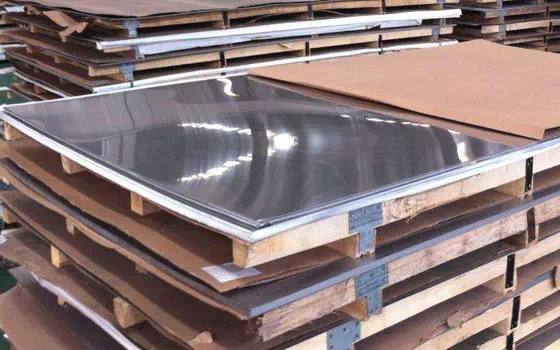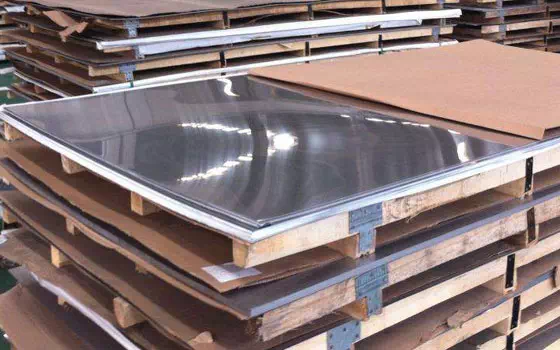Welcome to Zhishang Steel Co., Ltd.
TEL: (Gavin) +86-15665898999 | Email : info@zhishangsteel.com

Due to the diversity and unique properties of stainless steel alloys, they have become indispensable materials in the field of modern medicine. Required material properties include good corrosion resistance to body fluids, biocompatibility, excellent strength-to-weight ratio, fatigue resistance and low magnetic susceptibility. The term biocompatibility is difficult to define and can be simply described as: the ability to function appropriately in a particular environment of the human body.
However, traditional stainless steel materials cannot meet such strict performance requirements. For example, in order to meet the wear resistance requirements of joint implants, cobalt-chromium alloys are often required. Among other applications, titanium alloys are favored by the market because they help promote bone integration, ensuring the perfect attachment of implants to bone tissue. One of the first pioneers in the use of osseointegration was Swedish scientist Branamark, who began using titanium dental implants in dentistry in the mid-1960s.
Cardiovascular stents are a special application. Ni-ti shape memory alloys have been successfully applied to cardiovascular stents. The market in this area is huge and the applications are so diverse that it is impossible to describe them all here. We focus on some of these applications. The application of specialty alloys in the medical industry is mainly divided into the following three areas: dental and surgical instruments, cardiovascular and rehabilitation medicine. Traditional stainless steel is basically used for instruments and wounds.
Dentistry
A wide range of dental and surgical instruments include reamers, hooks, pliers, retractors, screwdrivers, scalpel blades, scalpels, and surgical needles. In instrument applications, traditional stainless steels (mainly austenitic stainless steels and martensitic stainless steels) generally perform satisfactorily. What we are introducing here is precipitation-hardened stainless steel Sandvik Nanoflex, which has unique properties and is strictly customized to meet the needs of surgical needle applications, where the material is required to have high strength and high ductility.
The precipitates give the hardened martensite matrix greater strength, achieving tensile strength of more than 3000MPa. Due to its high strength, high ductility and good edge retention, the material is suitable not only for suture needles, but also for drills, screwdrivers, taps, reamers and lancets. An example of a surgical needle is shown in Figure 1a, and an example of eye surgery is shown in Figure 1b. The eye is a very delicate organ and should be handled with great care. There is no doubt that the surgical needle must be high strength and high malleability to ensure that the surgery is foolproof.

Cardiovascular
Cardiovascular device applications include: pacemaker and ICD (implantable cardioverter defibrillator) leads, cardiovascular stents, wire guide systems, induction wires, artificial heart valves, medical catheters, and cardiovascular retractors. In some applications, such as:.
For guide wire and induction wire, the performance of type 304 and type 316 austenitic stainless steel can be satisfactory. However, cardiovascular devices often require the use of special alloys such as F562 (an alloy containing 35% cobalt, 35% nickel, 20% chromium, 10% molybdenum), ASTM B684 (an alloy containing 10% or 20% platinum-iridium iridium), or composites containing precious metal cores. Due to its corrosion resistance, high strength and fatigue resistance, F562 can also be used in stents, pacemakers and ICD leads.
Folding and expandable peripheral arterial stents. Shape memory refers to the ability to deform at a certain temperature and then return to the original undeformed state by heating at the "deformation temperature". From Wikipedia.
Rehabilitation
As life expectancy increases and the world population grows, the market demand for human replacement implants is also growing. Replacement implants are placed on the hips, knees, shoulders, wrists and elbows. Suitable materials are austenitic stainless steel (ASTM F138, high-nitrogen ASTM F1586), titanium alloys (primarily Ti-6Al-4V), or cobalt-based alloys (e.g. ASTM F75). Because the elasticity of titanium and its alloys is softer and closer to the elasticity of bone, it is not easy to fail due to fatigue. Steel nails are usually made of Ti-6Al-4V alloy. Factors influencing material selection are cost and patient age. Implants play an important role in traumatic conditions, such as bone repair and bone support after accidents. These implants are usually made of titanium or stainless steel.
Line images showing a complete knee replacement (left) and a partial knee replacement (right). The top half is the femur and the bottom half is the tibia. Polymer implants are not visible in X-ray images.

Zhishang Steel has always been a pioneer in custom steel and special supplies, and has been recognized for its efforts in enhancing work efficiency and product quality. In addition to ISO9001:2015 certification, we also adhere to strict quality policies and proprietary procedures. If you have any questions, please contact us to provide the best type of product solution for your pre-painted, coil coating metal process, we will closely support after-sales service to ensure that your subsequent problems can be solved in a timely manner, if you have any questions, please send email to info@zhishangsteel.com, we look forward to serving you.

Zhishang Steel, specializing in domestic steel products trade, warehousing, processing and other services. The team has four service teams: Shandong Zhishang Steel Co., LTD., Shandong Zhiyiheng Trading Co., LTD., Tai 'an Zhishang Economic and Trade Co., LTD., Shandong Zhishang Steel Structure Co., LTD. Mainly engaged in steel coil, coated, stee···